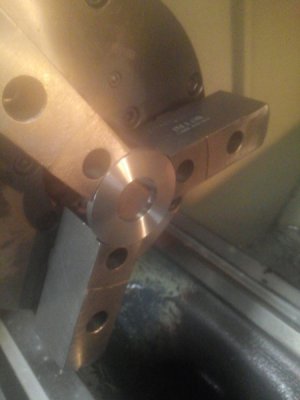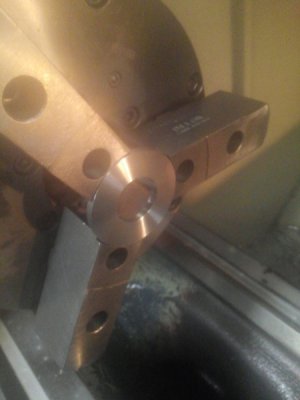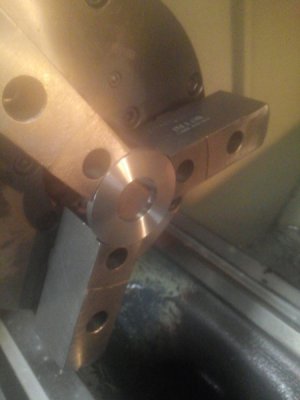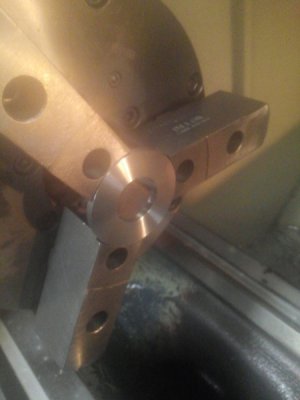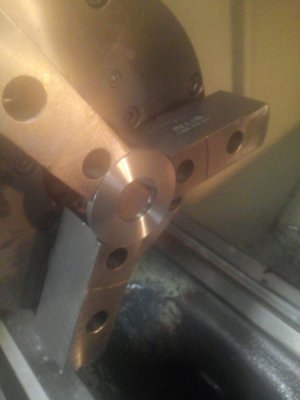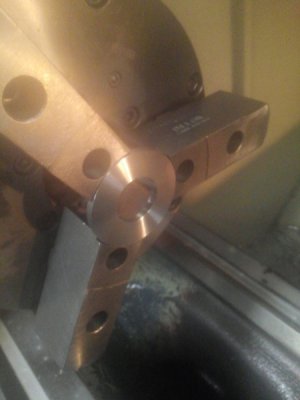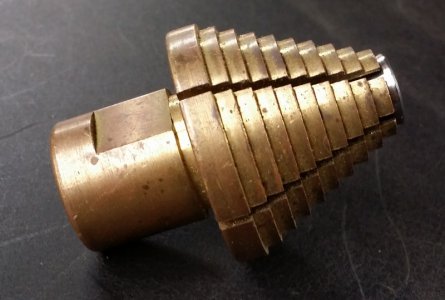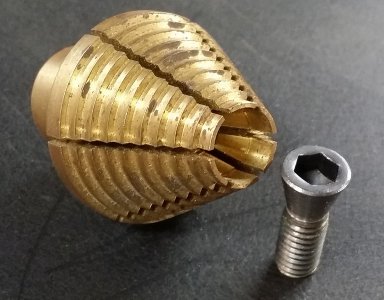A simple method, made several of these Friday afternoon, not actually washers as they get some mill work done to them, from the drawings they appear to be some sort of flanges used in a linear motion assembly.
This is 6061 aluminum but I would do it the same way in steel.
2 1/4" OD X 1.063" ID X .188" thick. All dimensions +- .005
Install suitable soft jaws on chuck, the jaws in the pic are the wrong diameter for the stock but this does not matter as the material is 2 3/8" they do however have the proper sized pocket to hold the finished part.
Face the stock then turn the finished OD, rough drill the bore, in this case I used a 31/32 drill.
Turned with an 80° diamond aluminum specific insert, 1000 RPM's, .008 IPM feed and .032" DOC
Drilled at 530 RPM's from the tail stock with a 31/32" S&D drill without a center drilled or spotted hole, also no pilot hole, straight in with the .980" drill.

Finish the bore with a boring bar, used a 1/4" shank bar because I had used it on the previous job that had a .6254 +.0005 -.0000 bore and 0nly had to go from .980 to 1.063 on these parts. 1000 RPM's, .015 DOC and .004 IPM feed. I left them .010" long for finishing.

Part off, Kyocera .125" wide insert parting tool 500 RPM's .002 Feed rate, caught the part with a T-handle hex key.

Place parts in jaw pockets and face off the .010" left, this customer requires very nice surface finishes and the parting does not leave a suitable finish itself.
Done, including set up, changing jaws, adjusting the chuck, picking out the tools and programming, the first part came off in less then 45 minutes.
This is in a chucker CNC lathe, it is possible that I could have done it faster on a manual lathe for one part but the chucker is superior when making several parts.
